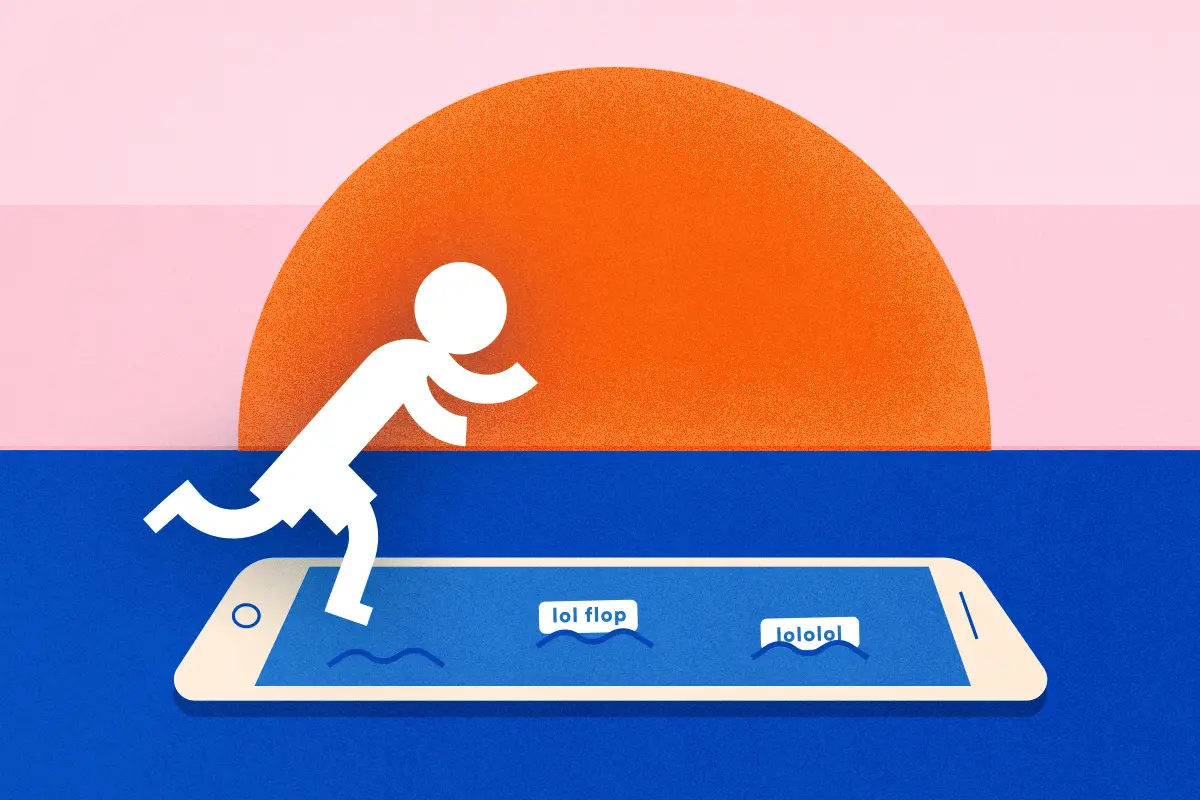The internet is no fun for teenagers these days. Social media platforms where they used to congregate, like Facebook and Twitter, have been overrun by trolls, corporate accounts and (most horrifying of all) people their parents’ age. Even teen-focused platforms such as YouTube, musical.ly and Tumblr are dominated by a small group of elite users and filled with advertisements and sponsored content.
Most teens continue to live out their social lives on the internet and have a deep desire for an online space that replicates a high-school lunch table — safely away from older generations and free to hash out their opinions about politics, social issues and the latest gossip.
Enter the Instagram flop account. Yes, this week in News That Will Make You Feel Old: teenagers create and follow “flop accounts” by the thousands. Before you feel the need to Urban Dictionary it and officially register yourself as out of touch, flop accounts are dedicated to posting “flops,” or failures.
Flops can be in the form of original photos and videos or screenshots of articles, memes and people from around the internet, as long as the thing being posted is unacceptable. Flops vary in their seriousness from weird but harmless fanfiction excerpts to posts about gun rights, homophobia and global human rights crises.
Groups of teens collectively manage these accounts, leading to the wide (and sometimes confusing) range of content. Some flop accounts specifically orient toward a certain fandom or community while others are more broad, but their purpose remains deceptively simple. One of the largest flop accounts, @toomanyflops_, describes their goal as posting “basically anything bad or cringey.”
As with any interaction between high schoolers (or more generally online, where everyone acts like their 10th grade self), this discussion can turn cruel quickly. All flop accounts are built around deeming things as wrong or unacceptable, much like a modern, open source version of the “Mean Girls” Burn Book.
They play into the larger internet call-out culture, intent on exposing and shaming people for not only their problematic or harmful actions but also things that are just cringe-inducing or honest mistakes. A flop account can feel like a well-run forum for debate, but it can also just feel like bullying.
The flop account trend began to make fun of celebrities and social media personalities, and the early posts from many accounts focus on the foibles of tween-centric celebrities from YouTube, Disney Channel and music groups. Sometime in the last year, though, the accounts grew in popularity as they moved toward more substantial subjects.
Posts about politics and social issues have grown in popularity, giving teens space to share and discuss their opinions. Admins act as moral arbiters, posting things that they see as morally or factually wrong, and the thousands of followers sound off in the comments about whether the post actually shows something wrong.
Many flop accounts fall on the liberal side, posting conservative content as flops, but there are also conservative accounts such as @feminismflops that focus on left-leaning content. On some accounts, the managing team itself has varied views, which leads to a wide, sometimes opposing range of flops.
The sheer popularity of these accounts, combined with the fact that no one over 18 has heard of them, shows that they fill some need in the high-school aged population. A quick search for Instagram posts tagged “#flopaccount” produces over 40,000 results, and the largest accounts have upwards of five thousand followers, with the top account bringing in over 17,000 follows.
https://www.instagram.com/p/BmMlI_KA2Nd/?hl=en&taken-by=toomanyflops_
One of the key draws of flop accounts is that they are mostly hidden away from the oppressive forces of the Internet — the parents, celebrities and brands that always come in and ruin online spaces. They feel democratic among teenagers, elevating many voices and viewpoints and actively inviting teens to comment and engage with each other about the adult debates that they are often silenced in.
They also feel private, so saturated in youth culture that even I, two years out of high school, could barely keep up with the layers of references and memes. Flop accounts use their weaponized consternation to bring awareness to social issues, but they also provide plenty of the cringey entertainment that teenagers seem to gravitate toward.
Increasingly, these accounts present themselves as alternatives to mainstream news for their young audience. Many posts are screenshots of news stories, but the discussion in the caption and comments section can sometimes take as much time dissecting the work and possible motivations of the original author as they devote to the content of the article itself.
Young people who have grown up on the internet have been trained not to believe everything they see, but compared to huge media brands and mass-marketed school curricula, flop accounts feel downright populist, and it makes sense that they have gravitated toward them.
Relying on teenagers to educate other teenagers, as well as including implicit commentary (calling the content posted a “flop”) with every news item, does not feel like a decent replacement for rigorous, well-reported news. It does, however show young people’s’ frustration with a media environment that often forgets them.
They make no distinction as to how cringe-inducing something must be: Within these accounts, all flops are equal. There is a binary of acceptable or flop, with the gray areas hashed out in the comment section or between various accounts. Teenagers have never been known for their sense of nuance, and the strictness of the format seems fitting for the black-and-white thinking that most 13- to 17-year-old brains engage in.
The growth of flop accounts as the new online hang out for teenagers shows a lot about our current crop of high schoolers: They are hyper aware of social issues and eager to have their voices heard. Like most people their age, they can be cruel and overly judgmental while also being intensely passionate and creative.
They bridge the gap between the clear rights and wrongs of childhood and the murkier morality of adulthood, and they currently do all of it in plain sight on the internet, because, as digital natives, it is the most natural place to be.
Already, the world of flop accounts seems to be disintegrating: The fact that I, a certified non-teen, know about the phenomenon is evidence enough for that. Soon enough, sponsored content and trolls will infiltrate the space, just like they did with Twitter, Tumblr, Facebook, MySpace and the hundreds of other areas that teens have carved out for themselves on the web over the years.
The bubble of security and privacy will pop and teenagers will migrate in response. Flop accounts are only the newest entry this long line and, knowing the pace of the digital world, they will soon be replaced. For now, though, they offer a glimpse into the intensely expressive and somewhat confusing world of teenagers in 2018, and perhaps that’s enough.

















